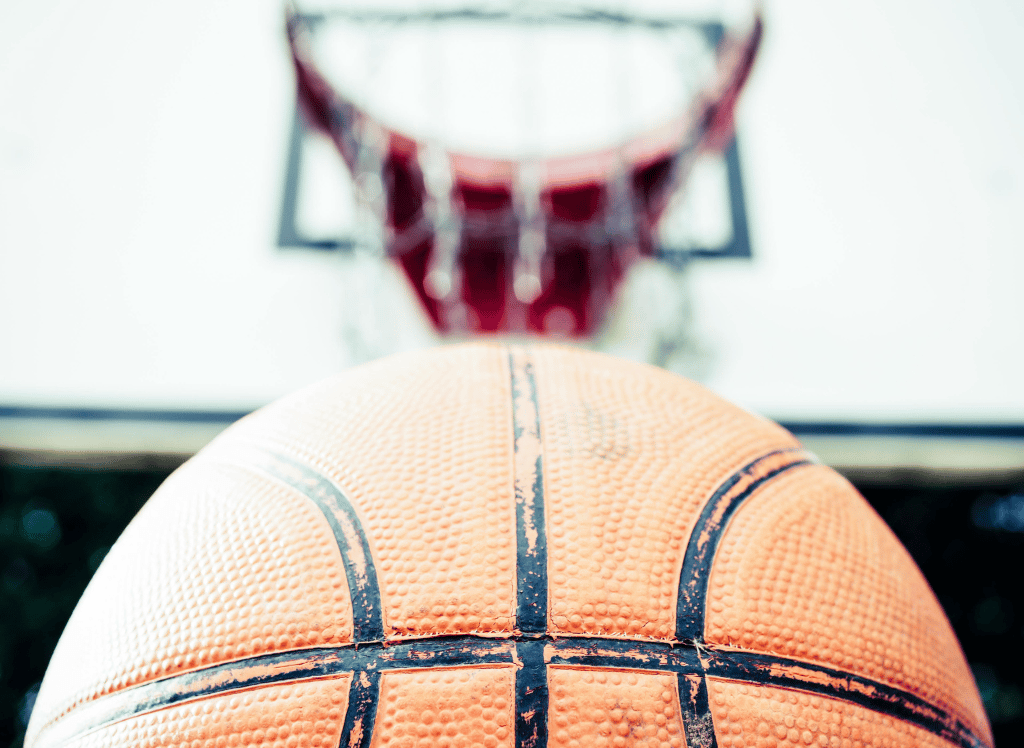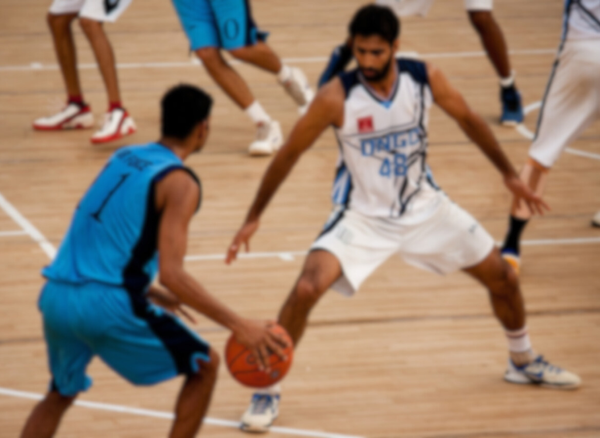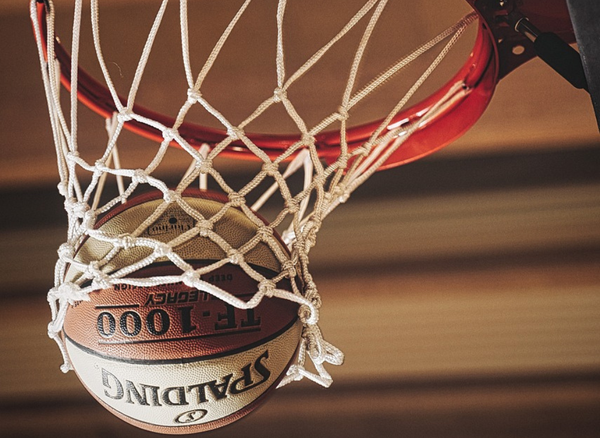The 3-2 zone defense in basketball is a strategic masterpiece that plays out like a coordinated dance on the court. Each player has a defined role and position, working together to shut down perimeter shooters.
Picture three defenders at the top line and two guarding the low post - a formidable fortress when executed seamlessly.
The beauty of the 3-2 zone defense lies in its simplicity and effectiveness. By positioning three defenders at the top of the key; outside the free throw circle and two defenders near the low blocks, this setup can disrupt the offensive team’s rhythm and force them into making mistakes. It's a great defense to use for trapping or double teaming players on the perimeter. But mastering this defense requires practice, communication, and a keen understanding of player positions and rotations.
Player Positions and Responsibilities
In a 3-2 zone defense, each player has a specific role that contributes to the overall effectiveness of the strategy. The three defenders on the top line are typically the point guard, shooting guard, and small forward. These players are responsible for applying ball pressure and preventing easy passes to the wings.
The two low post players, usually the power forward and center, are tasked with protecting the paint and contesting shots near the basket. They must also be ready to help on dribble penetration and rotate quickly to cover open shooters. It’s a delicate balance, but when done right, it can be a nightmare for the offensive team.
Basic Rotations and Defensive Pressure
One of the key elements of the 3-2 zone defense is the ability to rotate quickly and apply defensive pressure. When the ball is on the wing, the ball side wing defender must step up to challenge the ball handler, while the middle defender slides over to cover the high post area. The weak side wing and post defenders must be ready to rotate and help if the ball is reversed or skip passes are made.
Communication is crucial in these situations. Players must constantly talk to each other, calling out screens, switches, and rotations. This ensures that everyone is on the same page and that no offensive player is left unguarded. It’s like a well-oiled machine, where each part works in harmony to achieve a common goal.
Handling Dribble Penetration
Dribble penetration can be a thorn in the side of any zone defense, and the 3-2 is no exception. When an offensive player drives into the paint, the middle defender must step up to stop the penetration, while the weak side post player rotates to cover the middle. The top line defenders must also be ready to collapse and help if needed.
It’s a game of cat and mouse, where the defenders must anticipate the offensive player’s moves and react quickly. By staying disciplined and maintaining their positions, the defenders can force the ball handler into making a tough shot or a bad pass. It’s all about making the offensive team uncomfortable and taking them out of their rhythm.
Dealing with Skip Passes and Ball Reversals
Skip passes and ball reversals are common tactics used by offensive teams to break down a zone defense. In a 3-2 zone, the defenders must be ready to react quickly and rotate to cover the open shooters. When a skip pass is made, the weak side wing defender must sprint to the opposite side to contest the shot, while the other defenders adjust accordingly.
Ball reversals require similar quickness and awareness. When the ball is swung from one side to the other, the defenders must shift their positions and communicate to ensure that no offensive player is left open. It’s a constant game of adjustments, where the defenders must stay one step ahead of the offense.
The Importance of Communication
Without it, the defense can quickly fall apart, leaving open shots and easy scoring opportunities for the offensive team. Players must constantly talk to each other, calling out screens, switches, and rotations.
It’s like a symphony, where each player’s voice contributes to the overall harmony. By staying vocal and engaged, the defenders can maintain their positions and react quickly to any offensive movement. It’s a beautiful thing to watch when done right, and it can be the difference between a successful defensive stand and a breakdown.
Trapping and Surprise Tactics
One of the advantages of the 3-2 zone defense is the ability to set traps and surprise the offensive team. A well-timed corner trap can force the ball handler into making a bad pass or taking a tough shot. The key is to be unpredictable and catch the offense off guard.
The top line defenders can also set traps near the half court line, applying pressure and forcing turnovers. By mixing up their defensive tactics and keeping the offense guessing, the defenders can create chaos and disrupt the offensive team’s game plan.
Adjusting to Different Offensive Strategies
No two offensive teams are the same, and the 3-2 zone defense must be flexible enough to adjust to different strategies. Some teams may rely heavily on perimeter shooting, while others may focus on dribble penetration and attacking the paint. The defenders must be ready to adapt and make adjustments on the fly.
For example, if the offensive team is hitting a lot of outside shots, the defenders may need to extend their coverage and apply more pressure on the perimeter. Conversely, if the offense is attacking the paint, the defenders may need to collapse and provide more help in the middle. It’s all about being adaptable and staying one step ahead of the offense.
The Role of the Point Guard
The point guard plays a crucial role in the 3-2 zone defense. As the leader of the defense, the point guard must communicate with teammates, call out rotations, and apply pressure on the ball handler. It’s a demanding role that requires quick thinking and strong leadership skills.
The point guard must also be ready to help on dribble penetration and rotate to cover open shooters. By staying active and engaged, the point guard can set the tone for the rest of the defense and ensure that everyone is on the same page.
The Role of the Shooting Guard
The shooting guard is another key player in the 3-2 zone defense. Positioned on the top line, the shooting guard must apply pressure on the ball handler and prevent easy passes to the wings. It’s a challenging role that requires quick feet and strong defensive instincts.
The shooting guard must also be ready to rotate and help on dribble penetration, as well as contest shots on the perimeter. By staying disciplined and maintaining their position, the shooting guard can disrupt the offensive team’s rhythm and force them into making mistakes.
The Role of the Small Forward
The small forward is the third defender on the top line of the 3-2 zone defense. This player must work in tandem with the point guard and shooting guard to apply pressure on the ball handler and prevent easy passes to the wings. It’s a role that requires strong communication and quick decision-making.
The small forward must also be ready to rotate and help on dribble penetration, as well as contest shots on the perimeter. By staying active and engaged, the small forward can contribute to the overall effectiveness of the defense and help prevent open shots.
The Role of the Power Forward
The power forward is one of the two low post players in the 3-2 zone defense. Positioned near the low blocks, the power forward must protect the paint and contest shots near the basket. It’s a physical role that requires strength and toughness.
The power forward must also be ready to help on dribble penetration and rotate to cover open shooters. By staying disciplined and maintaining their position, the power forward can prevent easy scoring opportunities and force the offensive team into making tough shots.
The Role of the Center
The center is the second low post player in the 3-2 zone defense. Positioned near the low blocks, the center must protect the paint and contest shots near the basket. It’s a role that requires size and strength, as well as strong defensive instincts.
The center must also be ready to help on dribble penetration and rotate to cover open shooters. By staying active and engaged, the center can contribute to the overall effectiveness of the defense and help prevent easy scoring opportunities.
Common Mistakes and How to Avoid Them
One of the most common mistakes in the 3-2 zone defense is failing to communicate. Without constant communication, the defense can quickly fall apart, leaving open shots and easy scoring opportunities for the offensive team. Players must constantly talk to each other, calling out screens, switches, and rotations.
Another common mistake is failing to rotate quickly and cover open shooters. The defenders must be ready to react and adjust to any offensive movement, staying one step ahead of the offense. By staying disciplined and maintaining their positions, the defenders can prevent easy scoring opportunities and force the offensive team into making tough shots.
3-2 Zone Basketball Defense FAQs
Please browse through the following frequently asked questions for more information on this type of zone defense.
What is the main advantage of the 3-2 zone defense?
The main advantage of the 3-2 zone defense is its ability to neutralize perimeter shooting while maintaining a strong presence in the paint. By positioning three defenders near the free throw line and two near the low blocks, this setup can disrupt the offensive team’s rhythm and force them into making mistakes.
How can a team effectively communicate in a 3-2 zone defense?
Effective communication in a 3-2 zone defense involves constant talking and calling out screens, switches, and rotations. Players must stay vocal and engaged, ensuring that everyone is on the same page and that no offensive player is left unguarded.
What are some common mistakes to avoid in a 3-2 zone defense?
Common mistakes in a 3-2 zone defense include failing to communicate, not rotating quickly enough, and leaving open shooters unguarded. To avoid these mistakes, players must stay disciplined, maintain their positions, and react quickly to any offensive movement.
What is zone defense in basketball?
Zone defense in basketball is a defensive strategy where players are assigned to cover specific areas of the court instead of individual players. This allows defenders to protect certain areas and prevent easy scoring opportunities for the offensive team.
Summary
The 3-2 zone defense is a powerful tool in a basketball team’s arsenal. By positioning three defenders on the top line and two near the low blocks, this defensive strategy can disrupt the offensive team’s rhythm and force them into making mistakes. Communication, quick rotations, and strong defensive instincts are key to executing this defense effectively.









